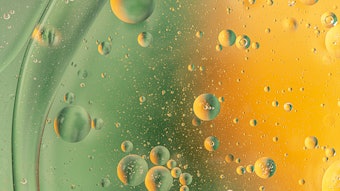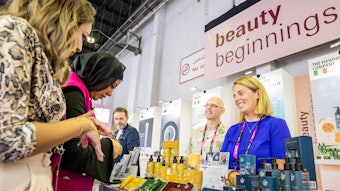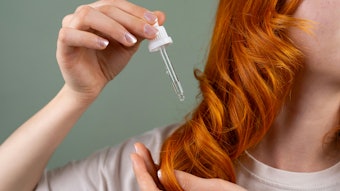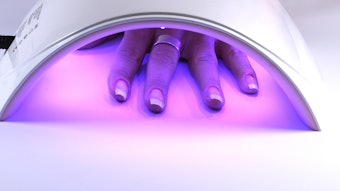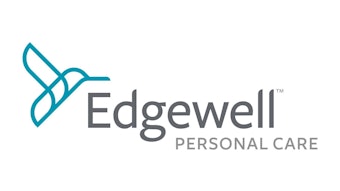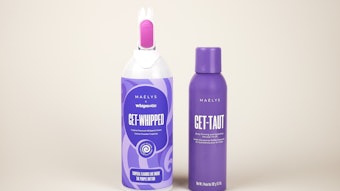- Brazil’s love affair with fragrances resulted in market-leading $2.9 billion deodorant sales.
- Sachet marketing has become a valuable tool to increase sales in low-income regions.
- The mature Western European market reports growth, with increased focus on offering value-added products such as deodorants with antiaging benefits.
- Nearly recession-proof, natural deodorants typically retail at approximately twice the price of their standard counterparts, making them an increasingly important area of growth.
- Consumers are willing to pay a premium for clear packaging and luxurious sounding ingredients.
- The cost of manufacturing will likely continue to rise, and this will pose a threat to future growth and likely lead to further consolidation.
According to Euromonitor International, the deodorants sector was one of the few segments to post growth in 2008 (8% globally; up from 5% in 2007) and outperformed the global cosmetics and toiletries market, which saw 5% growth in the same period. (See Figure 1.) This success is evidence of a shift in global consumer perception of deodorants—from a product with relatively low usage among consumers globally to one that is fast becoming a necessary part of daily grooming regimens. Despite strong growth rates, deodorants still only account for $17 billion in total sales worldwide, or just 5% of the overall market. This compares rather unfavorably with the 23% share held by skin care products, proving that there is still much work to be done if deodorants are to reach their full potential.
Latin America’s Love of Scent Key to Growth
Latin America was the strongest regional contributor to the growth of deodorants in 2008, with a 17% value increase over 2007, according to Euromonitor International. This growth was driven primarily by a boom in sales in Argentina (28% value growth), Venezuela (27%) and Brazil (18%). Brazil was the largest single market for deodorant sales, with sales of $2.9 billion in 2008, accounting for 17% of sales globally. The country’s dominance in retail sales of deodorants stems partly from its love affair with fragrances, which accounts for nearly one-fifth of its total cosmetics and toiletries sales. Deodorants are often used as a more affordable substitute for fragrances by lower-income consumers. The strong cultural emphasis placed on the importance of smelling good, combined with the increasing purchasing power of lower socioeconomic groups, contributed to the 18% rise in value sales in 2008 Gradual consumer trade-up from less expensive pump formats, as favored by domestic deodorant leader Natura, to more expensive sprays has also been a key factor in Latin America, leading to 59% growth in the sprays category in 2008. Leading companies such as Unilever, with its Rexona brand, are focusing on spray deodorants, with strong marketing activity and new product development. The main reasons behind this emphasis on sprays are that consumers who try the spray format rarely revert to less expensive deodorants such as pumps, and more importantly, profit margins are higher for sprays than for pump deodorants.
Sachets Boost Sales in Low-income regions
As many of the world’s consumers have considerably lower incomes than those in developed Western regions, sachet marketing has become a valuable tool for deodorant manufacturers to increase sales in low-income regions. In India, for example, Unilever has successfully marketed small Rexona deodorant sticks for a fraction of the cost of products sold in Western markets.
Mature Western European Market Posts Modest Rise
As the most mature region for deodorants, Western Europe accounts for the largest share of the global market, with sales worth $5.6 billion in 2008 (33%). In most Western European countries, there is a strong social stigma attached to not using deodorant, and this has kept product penetration very high for many years. Conversely, it is now difficult for manufacturers to make significant category gains in Western Europe. The market has reached strong maturity levels, and growth has been comparatively slow in recent years. The majority of consumers already use the more expensive spray deodorant format, so there is less scope for trade-up in that respect—although even the mature U.K. market still reported growth of 6% for deodorant sprays in 2008. Instead, marketers are increasingly focusing on offering consumers value-added products such as deodorants with antiaging (Unilever’s Dove Pro-Age) or ultra long-lasting benefits (notably Sure, also from Unilever).
There is a small but significant private label deodorant segment in Western Europe that accounts for a 4% share of total sales. Value-added branded products managed to stave off competition from private label in 2008, and these brands’ shares in the region remained stable despite the recession. Even Germany, notorious for being Europe’s biggest fan of private label beauty products, actually saw its private label share fall by one percentage point to 6% of total sales in 2008. Rising production costs made it harder for private label to pioneer new products, and competing with the research and development budgets of multinationals, such as Unilever, made growth for private label all the more difficult.
Natural Deodorants Immune to Consumer Cutbacks
As with other segments of the beauty industry, where premium-priced natural and organic products are booming, the natural deodorants segment is showing signs of being, for the most part, recession-proof. There have been consumer concerns about the chemicals contained in standard deodorants, such as aluminium, which has been linked to breast cancer. Despite Cancer Research UK issuing a statement saying that “there is no convincing evidence that antiperspirants and deodorants cause breast cancer,” ongoing consumer concern means that sales of previously niche aluminium-free deodorant brands such as Jason and Tom’s of Maine are growing and increasingly available in mainstream retail outlets. As these natural, free-from-aluminium deodorants typically retail at approximately twice the price of their standard counterparts, the natural segment will be an increasingly important area of growth.
Innovation; Clever Marketing Strategies Keep Sales Fresh
In the fight to increase market share by creating value-added products, it is becoming more common to see products that combine several of the unique selling propositions typically used to market deodorants. Mitchum’s Clear Gel combines one of the key trends in deodorants, the promise of no white marks, with long-lasting body odor control. Dove’s Invisible Dry is marketed as “anti-white marks” and “black dress friendly.” On top of this, Dove claims to offer 24-hour antiperspirant protection, as well as containing moisturizing cream. These kinds of value-added products are likely to become more commonplace through 2013 in order to try to discourage consumers from trading down to less-expensive brands. Hair minimizing products are also on the rise, with brands such as Sure and Dove both launching aerosol and roll-on formats. Sleek product designs and exciting ingredients appeal to the many consumers who are happy to pay a premium for both. Consumers are willing to pay a premium for clear packaging where they can see the product, or a curvy “feminine” shaped can (such as Soft and Gentle Eden). Luxurious sounding ingredients, such as pearl extracts, also convinced shoppers to spend more on deodorants in 2008.
Healthy Sales of Men’s Deodorants
Men worldwide are taking more interest in personal care than ever before, and this triggered an 8% rise in 2008 in the men’s deodorant segment, surpassing the healthy 7% growth seen in the men’s sector overall. Globally, in men’s deodorants, a strong marketing emphasis continues to be placed on masculinity, physical activity and sport. Unilever’s Axe brand leads male deodorants, and launched several high-profile new products in 2008—including Dark Temptation, a chocolate-scented deodorant. Axe’s tongue-in-cheek marketing, which focuses on increasing the user’s attractiveness to the opposite sex, has struck a chord with its 15–30 year-old target audience. Procter & Gamble, the second-ranked company in the global market, also has a strong presence in the men’s deodorant segment with its Old Spice brand, which is particularly popular in Western markets among the 40–65 year-old male demographic.
Multinationals Dominate Global Market
In 2008, Unilever was one of several companies to make a strong play into clinical strength deodorants, with Degree Clinical Strength for Men and Women launched in the U.S. While less than 5% of people actually suffer from excessive perspiration, a significant portion feel that they perspire more than what is considered normal. From a manufacturer’s standpoint, this is a great opportunity because margins are considerably higher on clinical strength deodorants.
Worldwide, the segment is highly consolidated and dominated by large multinational players. The strong brand identities of Rexona, Dove and Axe ensure that Unilever is the clear number one company in the category, dominating sales globally.
Rising Production Costs May Threaten Growth
The cost of manufacturing will likely continue to rise, and this will pose a threat to future growth, especially for smaller deodorant companies. It is likely that the global market will become even more consolidated, as multinationals are better equipped to absorb spiralling costs. Discounting and buy-one-get-one-free offers are also set to become more frequent, particularly in Western regions, and this could hit value growth in the sector—with many consumers becoming increasingly price-sensitive and exhibiting a low level of brand loyalty when it comes to choosing deodorants. These factors combined mean that, globally, the deodorants sector is set to post a slightly dampened compound annual growth rate of 2% to 2013. Continual investment in innovative products that offer consumers unique benefits will be crucial to counteract these problems and continue to convince consumers to keep spending more on deodorants.

!['Snoopy and Woodstock are cherished [characters] across generations and pairing them with our most-loved body care essentials creates a collection that feels classic with a modern twist. This launch is about celebrating our community with something unforgettable while starting an exciting new era for the brand,' said Luis Garcia, Chief Marketing Officer.](https://img.gcimagazine.com/mindful/allured/workspaces/default/uploads/2025/10/tree-hut-peanuts-fullcollection-fall26-1x1-1253.lGcuurUszp.jpg?auto=format%2Ccompress&fit=crop&h=191&q=70&w=340)
